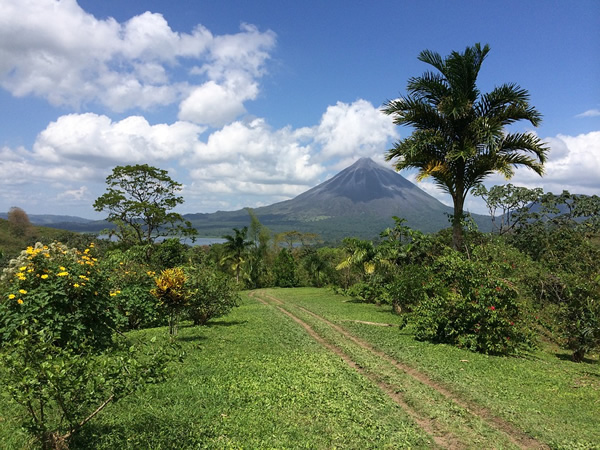Spanish Language School Hopping in Central
America
A Custom Summer Itinerary Learning at Different
Language Schools
By Jennifer Colletti
 |
| Learn Spanish in many varied rural and city locations, including Costa Rica, around Central America. |
Near the end of my 3-month study tour in Costa Rica friends marveled that I had been so many places in one summer. Many of them had spent the same amount of time studying Spanish at just one school. My unquenchable wanderlust
just wouldn’t allow me to commit all my time and resources to one country, let alone one city. And to my great satisfaction the itinerary I planned — involving two private Spanish schools in Mexico, two in Guatemala, and two in Costa
Rica — didn’t disappoint me once.
The goal of my trip was to achieve conversational-level Spanish and also to see as much of Central America as possible in just three months. I’ve always admired those intrepid solo travelers who simply strap on a pack
and hit the road for months of improvisational wandering. Unfortunately, I’m the type of person who simply cannot imagine landing on foreign soil with no solid plan and no support network.
Hopping from language school to language school was the perfect solution. I got to travel extensively on my own, yet I always had someone waiting for me at the next scheduled school and host family. I arranged a free week
or two for travel in between every stay at a language school, thereby allowing time to visit some of the places teachers and fellow travelers recommended. These weeks of solo travel didn’t feel too lonely or difficult because I knew I would
soon have the company of classmates again.
Benefits of Planning the Itinerary in Central America
I pre-arranged my entire trip through Spanish Abroad, a U.S.-based company that networks with many language schools in Latin America and Spain. All I had to do was read through the company’s website
and select the schools that appealed to me most. When I had mapped out where and when I wanted to study, I called them up and booked the whole thing in no more than 30 minutes. Spanish Abroad registered me with each school I chose and also arranged
a homestay during each week of study. The cost for these services was a 1-time $90 registration fee in addition to the cost of each week of class and homestay.
Making my arrangements through a company here in the U.S. felt much easier and safer than having to contact six language schools separately. Also, I could rest assured that these schools wouldn’t disappoint — Spanish
Abroad sends an employee to study at every language school it works with to ensure the standards are acceptable.
Another benefit of using one company to schedule my entire trip was that I always had an emergency contact in case I needed help changing plans. When I decided I just couldn’t endure a 2-day bus ride from Mexico into
Guatemala, I hastily bought a plane ticket and asked Spanish Abroad via email to arrange an airport pickup and a 1-night B&B stay in Guatemala City. The whole thing went off without a hitch, and I felt like I had a personal travel agent watching
my back.
Even if you’re not interested in mastering a language, spending just a week or two at a language school at the beginning of your trip can be the perfect gateway to a country’s culture, customs, and best destinations.
During the first week of class in Costa Rica, for example, teachers, and veteran students taught me about the country’s transportation system, money, food, colloquial sayings, and the most interesting places to visit. While I could have
arguably gleaned all this from my guidebook, having knowledgeable people to explain things made the assimilation much easier and the experience much richer.
Language Learning Tips
1. There is nothing like studying one-on-one with a tutor once you’ve reached a basic conversational level. In Guatemala, most of the schools arrange study with a personal tutor, and it
was in Guatemala that my fluency began to increase by leaps and bounds. Four hours a day spent in focused conversation with a tutor allowed for the repetitive practice I needed to cement the language in my head. I was also able to delve
into deep conversations with my tutors about Guatemala’s culture and politics.
2. Your brain will need a break after just a few weeks of class. While there are some super students, most people find they need time to digest what they’ve learned in between weeks of
study. I was very glad I scheduled no more than two weeks of class in a row. And, every time I started class after a week of travel and relaxation I was amazed at how much I had improved my Spanish simply by practicing what I had learned
in real-world conversations. |
For More Info
The following organization is
among many that will arrange your Language Learning
plans for you:
Language
Vacation
In addition, many companies will also help you arrange volunteer work as part of your trip. I ended my trip with a week of volunteering in the Costa Rican cloud forest near Monteverde. It was the perfect way
to put my newly-acquired Spanish skills to good use before returning home.
Author’s Itinerary
I studied at the following schools
and enjoyed them all:
Becari Language School,
Oaxaca, Mexico.
Instituto
Mexico-Americano de Cultura (IMAC),
Guadalajara, Mexico.
Casa
Xelaju, Quetzaltenango, Guatemala.
CPI, offers a variety of Spanish language courses in Heredia, Flamingo, and Monteverde, Costa Rica.
|
Jennifer Colletti is a freelance writer living in Chapel Hill, NC.
|
